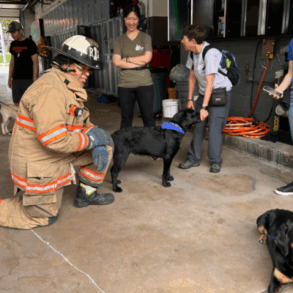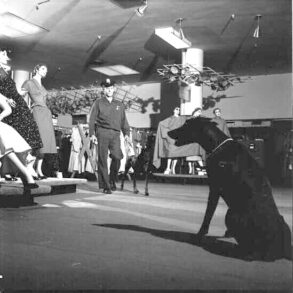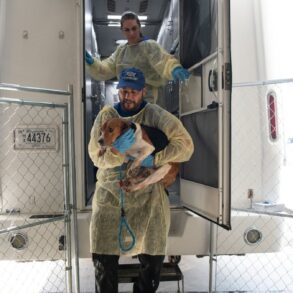Shelter dogs often get the cold shoulder for all the wrong reasons. Myths stick to them like burrs. In reality, many shelter dogs are house-ready and well-behaved. This guide breaks down the most common myths and shines a light on the truth—because every dog deserves to be seen for who they are, not who people assume them to be.
Shelter Dogs Are “Damaged Goods”

Credit: pexels
The idea that shelter dogs are “damaged goods” is one of the most persistent—and misleading—myths out there. Shelters work hard to help these dogs adjust, offering training and social time to set them up for success. What matters is patience, consistency, and the willingness to see beyond first impressions.
Shelters Mostly Have Senior Dogs



Credit: Pixelshot
Shelters aren’t just filled with grey muzzles and slow steps. Due to the flood of puppies and adolescent dogs rolling in, many kennels sound more like daycare centers. The Dublin SPCA reported a 120% spike in young dog surrenders, and the Tunica Humane Society has been juggling more puppy piles than it can count.
Only Mutt-Type Dogs End Up in Shelters



Credit: pexels
Purebreds make lesser appearances, but they’re definitely part of the scene. According to the National Animal Interest Alliance, around 5% of shelter dogs are purebred, with Chihuahuas and Pit Bull-type breeds leading the way. Even Trendy breeds like Goldendoodles, French Bulldogs, and Pomeranians land in shelters more often, usually due to mismatched expectations.
Every Shelter Dog Has a Tragic Backstory



Credit: Getty Images
Some dogs end up in shelters not because of drama, but because life got complicated—job loss, new baby, lease terms, the usual curveballs. It’s a myth that every shelter dog is a walking heartbreak story. With a little structure and kindness, most settle in faster than expected, trading stress for belly rubs and loyalty in no time.
Shelter Dogs Are Problematic Pets



Credit: Getty Images
A surprising number of shelter dogs have experienced home life—they’re gentle with kids, chill around cats, and fully committed to afternoon naps on the nearest sofa. Some even get a jumpstart on family life through programs like the Shelter Buddies Reading Program in Missouri, where kids read to nervous dogs to boost their confidence.
Shelter Dogs Are Inherently Unpredictable



Credit: Getty Images
Calling shelter dogs unpredictable overlooks a big piece of the puzzle. Most have already been evaluated for temperament, energy levels, and how they respond to people and other animals. Shelters are loud, overwhelming spaces, and stress can throw any dog off their game. Sure, no test can foresee every zoomie or bark-fest, but unpredictability isn’t unique to shelter dogs.
Adopting a Shelter Dog Is a Solo Endeavor



Credit: corelens
Shelters do the legwork: medical exams, vaccinations, spay or neuter procedures, and behavior evaluations all happen before the dog meets potential adopters. And once the adoption papers are signed, many shelters continue to support new pets by helping them settle into their fresh start. It’s a team effort.
You Won’t Find Small Breed Dogs in Shelters



Credit: Glowonconcept
Small breeds end up in shelters for the same reasons as any dog: moving, family dynamics, or financial shifts. In truth, they’re in and out quickly, snapped up by adopters who know where to look and when to act.
If You Have Allergies, No Shelter Dog for You



Credit: flickr
While no dog is 100% hypoallergenic, breeds like the Maltese and Coton de Tulear—with their non-shedding coats and lower allergen levels—do land in shelters more often than people realize. Life changes, not allergies, are usually why these dogs are surrendered.
Adopting a Shelter Dog Comes with Hidden Costs



Credit: Getty Images
The idea that shelter adoptions come with sneaky, surprise costs doesn’t hold water. Most shelters roll essential services—spaying or neutering, vaccinations, microchipping, and a full vet check—into the adoption fee. Getting those done separately at a private clinic would cost you much more. Organizations like the Animal Humane Society build everything into the price.
All Rescue Dogs Have Potty Training Issues



Credit: Africa images
Assuming every rescue dog is a walking potty-training disaster is a thing of the past. A lot of shelter dogs have already lived indoors and know the drill. These dogs often adjust quickly with a steady routine and positive reinforcement. They’re eager to learn and even more eager to please.
Dogs Abandoned in Shelters Can’t Truly Love



Credit: Canva
It’s a myth that being abandoned leaves dogs emotionally shut down. In reality, many quickly love hard and hold on tight once they realize they’re finally safe. The timeline varies—but the outcome is often the same: a dog who looks at their person like they hung the moon.
This post was originally published on this site be sure to check out more of their content.















































